
EXPLORE


Manuel Appert
keywords:Manuel Appert
keywords:
Since the approval of planning permission for the Heron Tower in 2001 in London, several dozen tower blocks have been built in the city. In Greater London, there were 342 tower blocks, and one planned, approved or under construction as of 1 January 2015. In less than 15 years, tower blocks have changed the city's skyline, which is full of history and symbols. Supported, more or less explicitly, by the municipal teams that have succeeded one another since 2000 since 2000, these new tower blocks, mostly residential, are supposed to respond to the constraints of urban capacity. They are also powerful levers of speculation and communication for developers, investors, architects and the municipality who approve them. In London, they can be read as markers of the regional political project which intends to assume the stature of London as a global city and a driving force of the British economy (Appert, 2005). London is not an isolated case in Europe. Many metropolises have also embraced verticality without it having been measured, characterised and interpreted. The first part of this volume will be devoted to this task.
To discuss the return of high-rise buildings, I rely on the identification of several debates that have emerged in the scientific and political arenas. The reflections allow us to read the verticalization of cities and to reposition the question of great height in the contemporary stakes of the manufacture of the city. Current political debates most often reveal Manichean points of view, opposing the supply/demand of available surfaces, densification/urban sprawl and economic development/preservation of the city's identity. These oppositions often implicitly articulate economic rationalities, materiality and imagination, which invite us to go beyond the sole architectural dimension of the tower block (…)
Introduction extract, p. 5.
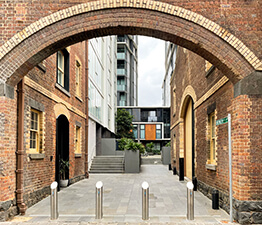
Louise Dorignon
keywords:Louise Dorignon
keywords:
Within new configurations of the ‘Great Australian Dream’, high-rise living in Australian cities has become not only an acceptable housing configuration for the middle classes but also a desirable one. Enquiring deeply into the tactics and strategies that building inhabitants use to live vertically in the city, this thesis explores the ways in which the design, inhabitation, and maintenance of middle-class high-rise developments are negotiated in Melbourne inner-suburbs. It explores dwellers’ agency in the negotiation of design choices and co-production of high-rise spaces, using mixed qualitative methods combining walking tours and semi-directed interviews. Drawing on the new geography of architecture and on a relational approach to housing and home, the research engages with a theory of practice acknowledging tactical and strategic actions in the city. It argues that dwellers reshape the socio-material configurations and spatial relations of apartment living set by designers, developers and housing technologists. Explicitly recognising of the role of social class in high-rise living, the research suggests that apartment developments are highly contested sites where intended lifestyles and aspirations are negotiated by varied institutions and actors, through a distinctive set of temporal and spatial actions. It finds that competing actors all work towards the co-production of high-rise living spaces and cultures. However, the thesis also shows that housing relations in the practice of middle-class apartment living outline an uneven and changing distribution of power between those who develop strategies and those who craft tactics. More broadly, this research opens up a deeper understanding of how this new kind of vertical city reflects and transforms configurations of status, power and identity in the Australian suburb.

Énora Achéritogaray
keywords:Énora Achéritogaray
keywords:
Featuring AGILE virtual assistance, the new Thyssenkrupp elevators are promoted as “the next major innovation in our journey toward creating a galaxy of unparalleled connectivity and personalization. A galaxy where technology instantly and seamlessly connects people and places, work and leisure, reality and dreams”. The elevators have become the markers of the promotion of the towers which, although hyperbolic, is interesting because it implies that they are at the heart of high-rise living experiences. Drawing on the new geography of architecture and on ordinary approaches of vertical cities (Jacobs, 2006; Harris, 2015), this research explores the non-remarkable experiences, practices, and textures of the elevator rides as specificities of high-rise living and verticality. It argues that without being completely ordinary, elevator rides are daily, succinct, but above all particular moments: a passage between home and the city, inside and outside, public and private spaces, and a more intimate part of an urban itinerary than those drawn by the big city. Through the case of Lyon, this study paints a portrait of the inhabitant’s daily elevator’s experiences by addressing issues of mobility, sociability, and atmosphere to analyse the complexity of high-rise living in vertical cities. If the experience of the elevator is the genesis of a sensitive relationship with the machine as with the tower block and the vertical city, this research shows that such lifts and rides are transforming urban experiences of the cities. It assumes that residents develop unequal vertical competences, questioning tactics and strategies, the negotiation of their identity and anonymity, and the spatial appropriation of the space inside the lift. As Thibaud’s works asks “what is a step in the city?”, this research proposes to critically addresses “what is a step in the elevator?” to build a deeper understanding of the challenges embedded in the processes of vertical urbanism in the contemporary cities and urban life.

Geoffrey Mollé
keywords:Geoffrey Mollé
keywords:
By what means and in what forms are residential towers making a comeback in urban planning strategies in France? When architectural modernism praised the emergence of real 'living machines' (Le Corbusier, 1925) by building towers and blocks in post-war France, the new vertical projects appear more like commercial products, goods. Offering 'state of the art' lifestyles, set with a wide range of specific and innovative residential services (L.Costello and R.Fincher 2005, R.Fincher 2004, 2007), they embody a new vision of vertical housing. The artefact of the residential tower, designating a form that is still considered too negative, is abstracted to represent a whole system of practices, of social interactions, justified and legitimised by the innovative vision of property developers. Breaking with egalitarianism and social equity, the 'Global Lifestyle' (R. Fincher, 2007) targets a 'Global Elite' (S. Graham, 2015) and seems to convey the logic of socio-spatial segregation. The new residential towers are emerging in major metropolises such as London (M. Appert, 2011), New York (S. Graham, 2015), Vancouver (S. Graham, 2015 and L. Hodyl, 2015) and Melbourne (R. Fincher, 2007 and L. Costello, 2005) and are evidence of a speculative property market (S. Graham, 2015). Globally, this pressure to verticalise (McNeil, 2008) also seems to be standardised, and raises questions about the spread of its forms, including in contexts that are reluctant to use height.
(...) If the neoliberal turn is concomitant with the globalisation of exchanges, it is also the marker of the advent of an urban and local scale, which is significant at all levels in the analysis of contemporary territorial mechanisms. Vertical and globalised goods are thus confronted with more horizontal governance mechanisms, as shown in France by the transition from city government to urban governance (P. Le Galès, 1995). The increase in autonomy, and therefore in the urban and local competence of local authorities (G. Pinson, 2010) then raises the question of a more balanced relationship with private actors, and therefore developers, on the vertical issue. Indeed, would there not be specific planning provisions in France that would encourage a nuance in the capitalist expressions of high-rise housing abroad? The new residential tower blocks seem to be linked to the urban development of strategic neighbourhoods for public actors, which they mark with their dimension of "symbolic places" (J. Monnet, 1998), taking place in the urban landscape. Justified by the ideology of densification (J-M. Huriot, 2011), in reaction to urban sprawl that is too costly, hinders environmental sustainability and is degrading for collective well-being (E. Glaeser, 2011), they are reinvented in the light of new qualities of use.
Their connection with the injunctions of sustainable development (P. Hamman, 2009, H. Meyer D. Zandbelt, 2012) even seems to be outdated in favour of 'liveability' (P. Howley, 2010), aiming at the challenges of 'living together' through the imaginaries of inhabitation (Heidegger, 1956, C. Ghorra-Gobin & O. Lazzarotti, 2008) or even that of nature (F. Vuaillat, 2012). The new "hyper-scalar" residential tower is doubly anchored in the global circuits of the real estate market, but also in the mechanisms of local urban development. Connected to both the telecommunication networks (L. Costello, 2005) and the urban networks of the city centre (D. McNeil, 2005), it is nonetheless "hyper-spatial". These two dimensions (M. Lussault, 2017), combined with these games of 'glocal' scales (C. Montès & M. Appert, 2015), illustrate a certain dimension of hybridity that is constitutive of the new objects of the geographies of globalisation (L. Gwiazdzinski, 2016).
The emphasis is thus placed on a residential tower block caught between a standardisation of landscapes and practices, imposed by the globalisation of financialised capitalism, which would install a smooth and 'flat' space, where distances disappear, and a differentiation of the latter into places, asserting themselves as 'holds' on globalisation and representing anchors of social life (M. Lussault, 2017).
How does the process of residential verticalization in France represent a shift from the 'tower' object to the manufacture of 'vertical places'? Introduction extract, p. 6-8.

Geoffrey Mollé
keywords: imagination, innovation, vertical housing, lifestyle, discursive strategiesGeoffrey Mollé
keywords: imagination, innovation, vertical housing, lifestyle, discursive strategies
While more than 350 projects of towers were approved in Europe these last ten years, the question arises of a pressure to verticalization in France. If those projects are making debate in Paris with the recent refusal of the project Triangle, it seems that it is less the case of Lyon which more than with the delivery of the Incity tower in 2015 gets ready for the reception of vertical residential projects. This is the instance of the developer Bouygues Immobilier, which has already launched processes of commercialization of vertical housing with the projects Sky Avenue in the district of “la Part-Dieu” and “Follement Gerland”, in the eponym district. Indeed, although mental stigmas from the Modernist period remain anchored in the consciousnesses, how can be explained such a return of the residential verticality? In a context of interdependence between the actors of urban development, the vertical projects are representative of a big profitability for the developers and the emblems of certain prestige for the elected representatives. Can’t we imagine therefore the existence of an urban marketing facilitating their adoption? While the pre-commercialization of the projects by the developers is finding buyers, can’t we think this is due to their use of performative, innovative discursive strategies? Spread by the elected representatives within the framework of the urban communication, such strategies seem to illustrate the promotion of new urban lifestyles trough the access to unique collective and private services, a closeness with the nature and a connection to networks and services of the city centre. Therefore, is the return of the projects of towers in France understandable by a redefining of the vertical imaginaries through the real estate innovation?

Pierre-Eloi Coste
keywords:Pierre-Eloi Coste
keywords:
There is a strong link between all of Asia’s emerging metropolitan cities, which can be seen in the upsurge of urban verticalization. The use of high-rise buildings predominantly for dwelling rather than mixed-use functions, is now shaping the landscape of those cities. Within large-scale urban developments, these projects aim to instill order in urban organization and host a fast-growing urban population according to modernist principles as well as to maximize the profits of land used. Moreover, according to an international circulation of ideas and references, the vertical model follows a generic logic, which places cities in the heart of globalization. However, if defined as the combination of the designed, built and lived forms, the notion of «architectural model» breaks down the idea of a global homogeneity into an overlap of multiple interests and ambitions. Indeed, through the case of Hanoi, this study shows that between the designing, building and reception stages, all the stakeholders, politics, developers, designers and especially dwellers, are going through a constant acculturation process, from local to global cultures, which lead them to adopt diverging perhaps contradictory positions. Thus, by comparing the discourse of developers with what is being built and attested usages of spaces, there appears a complexity which transforms these residential towers from a simple spatial scheme to a laboratory of globalization.
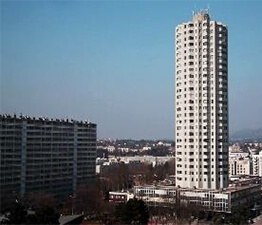
Alexandre Chabardès
keywords:Alexandre Chabardès
keywords:
In order to approach the point of view I would like to develop in this thesis, we must first study the notion of “inhabiting”. (...) We can [therefore] observe that the building, as a constructed object, delimited in space, with its material, technical and physical characteristics, does not allow us to understand the way in which people inhabit it. (...) The objective construction of the building does not hold the confrontation to reality, and it is only through the study of the practices of those who are confronted with the tower, in their daily experience, that we become able to account for their personal relationships to this space.
In order to study the relationship to height, this paper will address this question of inhabitant practices, using experience as a prism. (...) The study of experience in high-rise buildings sheds light on the perception of height. Introduction Extracts, p. 16-18.
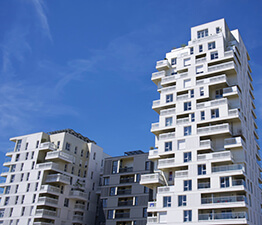
Manuel Appert, Hélène Mathian, Geoffrey Mollé
keywords: residential verticalization, TOD, transit oriented development, urban intensification, densityManuel Appert, Hélène Mathian, Geoffrey Mollé
keywords: residential verticalization, TOD, transit oriented development, urban intensification, density
This paper give insight into the return of high-rise residential buildings in french cities (97 identified as January 2018). Office towers which are far less numerous than residential ones, have paradoxically been the main focus of attention. Our intention here is to shed a light on the highrise residential boom particularly visible is spaces of regeneration (Appert, 2016). High-rise living, for long associated with social housing, deprivation and the demise of public estates, has been reconsidered, especially within the context of sustainability and Transit Oriented Development (Appert, 2016). TOD policies that embodied planning for the compact city model (Bentayou et al., 2015), are based on the coordination of transport and planning policies and investments in order to reduce the volume and length of motorized trips. The coordination of theses policies translates into higher density and more mixed developments on previously development land, close to public transport nodes. This partial re-urbanisation is capable of transforming the social composition of the city as the housing stock deliverance appear to be much more dedicated to specific social groups targeted by developers (Dubois et Van Criekingen, 2006, Jones et Ley, 2016). In this paper, we first show that contemporary residential towers, contrary to their stigmatized Grands Ensembles counterparts built in the 1960s and 1970s (Gilbert, 2012), are being built in pericentral areas of french major cities, close to transport networks interchanges. We then demonstrate that these high-rise projects are justified by their promoters and regulators through narrations of TOD policies and aspirations. We finally show that these attractive locations inside cities benefit most to wealthy and/or small size households. The research undertaken is based on the creation of a new database on high-rise residential buildings in France (2015-2020) and the analysis of their location patterns in context. It is also based on several interviews of developers, local authority practitioners and real estate actors for seven developments in the Lyon metropolitan area. While contributing on researches on spaces of contemporary living, this paper introduces the less documented phenomenon of residential verticalization in France.

Loïc Bonneval, Aurélien Gentil
keywords:Loïc Bonneval, Aurélien Gentil
keywords:
The international context which sees the return of the verticality in urban forms, leads to interest in the representations associated with this type of buildings. In France, we are confronted with two discourses that are not very comparable, that of developers and urban planners on current projects, therefore without historical hindsight, and that on the negative stigma associated with large social housing complexes. By focusing on large luxury housing estates, which have not been studied much so far, it is possible to bring out representations over a long period of time of buildings that have not undergone a process of impoverishment. Based on two case studies of Lyon's housing estates, this article shows how the anchoring processes of a part of the inhabitants, understood as the forms of attachment and involvement that contribute to the lasting inscription in these housing estates of successive generations of inhabitants, underlie these representations, and in particular the symbolic and material requalification of the buildings from the end of the 2000s.

Manoel Rodrigues Alves, Manuel Appert
keywords:Highrise, urban transformation, urban regulation, innovative spatialities.Manoel Rodrigues Alves, Manuel Appert
keywords:Highrise, urban transformation, urban regulation, innovative spatialities.
In the contemporary city, a cultural phenomenon that responds to parameters that point toward an era of transition, the urban space is a product and reproducer of the dynamics that guide its time; a living cultural space produced by social relations that are neither neutral, uniform nor exact, where the experience of belonging persists amid a group of transformations where the flow of local and global conditions seems to have an impact upon collective experience in the urban territory. In this context, where regulatory capitalism and entrepreneurial municipalities are participating in the promotion of singular urbanization processes to control the urban space, we analyse issues related to vertical urbanism in São Paulo.
In the contemporary scenario, residential high-rises are more than an architectural solution. Once a place for living, are now commodities of a global market where capital flows, fixed by developers (and municipalities), of a particular strategy of reproduction of the urban space: space as a business, a productive element and a condition of capital reproduction. In this process, urban space requires a new relation between the public power and the financial sectors, aiming not at the reproduction needs of the urban life but at expanding the social base necessary for the accumulation process.
This communication debates this theoretical framework in the context and hypothesis of the ongoing french-brazilian research "High-rise Living and the Inclusive City", presenting some preliminary results in São Paulo, Brazil, related to building typology, urban tissue, urban legislation and "false public spaces". São Paulo is a laboratory of high-rise living in the global South; its governance is facing intense pressures from the globalization of its real estate market that promotes ‘innovative’ spatialities and urban governance/management, privatization and transformations of the urban space. New dimensions and institutional networks that reconfigure territories tend to reveal the substitution of class/social divisions by lifestyles divisions.

Manoel Alves
keywords: contemporary city, production of the urban space, verticalization, highrisesManoel Alves
keywords: contemporary city, production of the urban space, verticalization, highrises
In the contemporary city the urban space is a product of particular dynamics of transformation of the urban territory. The project 'Highrise Living and the Inclusive City', argue that new dimensions and institutional networks reconfigure the urban territory and promotie a city that can not be qualified as inclusive. It analyzes the production of highrises buildings in the urban space of São Paulo and Lyon, questioning, in a transdisciplinary theoretical conceptual field, recent processes of urban transformation. This communication presents some preliminary results of the project.

Maíra Daitx, Manoel Rodrigues Alves
keywords:Highrise, public spaces, street marketing and urban branding, real state market, process of absortionMaíra Daitx, Manoel Rodrigues Alves
keywords:Highrise, public spaces, street marketing and urban branding, real state market, process of absortion
Investment of private capital for the maintenance of public spaces has become a usual practice in cities, from large metropolises to smaller ones, with the counterpart of temporary or permanent branding. In some cases, private events are organized in these spaces, stimulating uses and practices conditioned by consumption, with the partnership of municipalities. How does this process become significant to the production of urban space, once investments in spaces of public life come from the same source as the spaces of private life? Are we witnessing a new form of build-in gentrification, of all-enclosed buildings signs of a growing exclusion in the so called ‘neoliberal’ entrepreneurial city?. Real estate and property developers have recently earned a great participation in the dissemination, reproduction and maintenance of certain urban practices in a territory previously not dominated by them: the public space. Thus, one wonders: Is this process representative of an attempt to create and reinforce certain urban lifestyles? In what ways do certain residential high-rise housing typologies dialogue with the spaces of public life, conditioning certain activities to or withdrawing them from it? Taking the city of São Paulo as a sample of this process, this article aims to explore aspects of the process of territorialization of these companies in urban public spaces, consequences to public life and to discuss the regulations that make this practice possible, as well as the relationship (and counter-relationships) of this type of “street marketing" with the high-rise residential buildings produced by them.

Camila Moreno, Luiana Carolina Cardozo, Manoel Rodrigues Alves
keywords:Contemporary city, verticalization, production of the urban space, highrisesCamila Moreno, Luiana Carolina Cardozo, Manoel Rodrigues Alves
keywords:Contemporary city, verticalization, production of the urban space, highrises
Urban space is understood as a product and producer of the dynamics that govern its time, reflecting the contradictions of its production processes. These processes, promoting oppositions and tensions between domains, legalities, uses and urban practices, are usually conditioned by an articulation between the State and private agents, therefore demanding new interpretations of the established relationships. The ‘Highrise Living and the Inclusive City’ project investigates, focusing on São Paulo and Lyon, aspects of verticalization processes based on specific axes and scales of analysis, crossing methodological procedures that encompasses territorial and spatial analyzes, as well as. This communication mainly presents the results of the research in its smallest scales, observing also the construction of critical postrepresentational cartographies and spatio-temporal narratives.

Manoel Alves, Maíra Cristo Daitx
keywords: inclusiviness, equality, equity, urban space.Manoel Alves, Maíra Cristo Daitx
keywords: inclusiviness, equality, equity, urban space.
The mundialization process has led to significant transformations in the urban space, where new relations between public power and financial sectors have expanded the social base necessary for capital accumulation, thus contrasting with the reproduction of human life needs. In such a neoliberal context, where the State has opened up the command of the urban space production to flows and interests of the private market, decreasing its participation as the provider of the common good and, in many cases, reinforcing its role as the insurance of capital profit, questions on inclusiveness, equality and equity, common to the fields of sociology and politics, have started to gain headway in talks on architecture and urbanism. One of the reasons for this discussion is most areas under urban transformation have been facing an uncertain future due to the lack of basic public services. Supported by urban laws, developers are occasionally exempt from responding to such needs, which are left in the hands of market competition and the offer-and-demand logic.
What demand and who does this market respond to? Whole neighborhoods have been created according to the enclave model, in which conveniences are drawn for indulging the tastes of their consumers. As such, those services are designed and located towards fulfilling the needs of homogenous groups not necessarily open to contact with others. Such urban samples, however, show no difference and heterogeneity, which are basic conditions of an equal urban space. Education, health and leisure are not offered to all classes of citizens, but to specific target groups. The right to the city regarding both human rights (e.g., housing, education, health, accessibility, mobility, etc.), which should (and could) be provided by the State, and political rights of being included in the production processes of the city (HARVEY, 2008) are far from being equal in the decision-making structures of the current politics. At best, some groups are included in discussions on transformations of their own neighborhoods – their own homogeneous and limited spaces –, but not on the ideals and means of production of their territories, cities, and urban space.
If urban inclusiveness, equality and equity (considering their differences) are a major concern from our time, we should set our eyes into their opposites, i.e., the forms of urban segregation and exclusiveness. By unveiling their aspects of capital reproduction, relationships of power and social responses (good or bad), we can evaluate if we are creating (or even trying to create) more inclusive, equal or fair cities, questioning: To what extent are (or are not) speeches, urban policies and interventions related to the (re)production of a city characterized by intensifying social and spatial segregation for increasing urban inequality? What type of urban equity is eventually possible in a city where “[…] the characteristic resort of the globalised city involves an elementary principle of urban space: segregation”? (CASTRO ORELLANA, 2011:56). Can this movement be reversed in an era in which reinforced individual liberties, high competitiveness, lack of security, trust and hope (in institutions, in the future and in ourselves) are increasingly rising? In the next paragraphs, we intend to enlighten the reality of our particular context, i.e., the city of São Paulo, regarding the recent alterations in its urban laws and their consequences for the transformation of the urban landscape.

Manoel Alves, Camila Moreno de Camargo
keywords: urban Morphology, urban transformation, Covid 19, citizen participation, critical cartographyManoel Alves, Camila Moreno de Camargo
keywords: urban Morphology, urban transformation, Covid 19, citizen participation, critical cartography
Urban life representations, citizen participation and sociospatial disaggregation patterns COVID-19, in urban areas, is associated with processes that indicate socio-spatial dynamics and practices in an urban morphology that, resulting from uneven urban development patterns, promotes serious health commitments to groups exposed to the risk of viral transmission. Through critical cartographies, based on public research databases, we question urban space transformation trends, urban morphology and living spaces - their nexuses with socioeconomic data, social vulnerability and support capacity. As a new layer, collaborative mappings promoted by diffuse entities and organizations are associated to significant aspects of urban reality. In view of the social isolation due to the pandemic COVID-19 we argue that critical cartographies and initiatives of citizen participation, can, on the one hand, be a counterargument to certain representations and contribute to a more effective reading of the transformations underway and, on the other hand, become an effective instrument for registering people’s perceptions and interpretations, as well as a tool for empowering people.

Manoel Rodrigues Alves
keywords:Manoel Rodrigues Alves
keywords:

Manoel Rodrigues Alves
keywords:Manoel Rodrigues Alves
keywords:
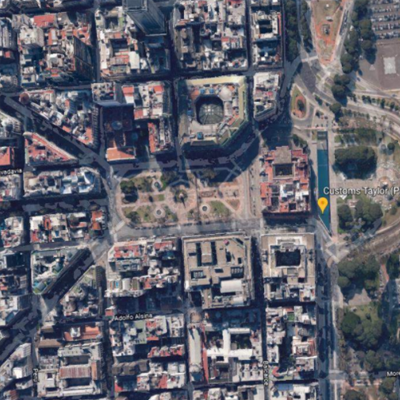
Julio Arroyo
keywords:WorkshopJulio Arroyo
keywords:Workshop

Julio Arroyo
keywords:Julio Arroyo
keywords:

Jacques Léone
keywords:Workshop
Katia Canova
keywords:Workshop
Julio Pedrassolli
keywords:WorkshopJulio Pedrassolli
keywords:Workshop

Luiana Cardozo, Milena Sartori, Vanessa Rodi
keywords:WorkshopLuiana Cardozo, Milena Sartori, Vanessa Rodi
keywords:Workshop

Manuel - Hélène
keywords:Workshop
Baptiste Girault, Mélanie Mondo, Manuel Appert, Hélène Mathian
keywords:WorkshopBaptiste Girault, Mélanie Mondo, Manuel Appert, Hélène Mathian
keywords:Workshop
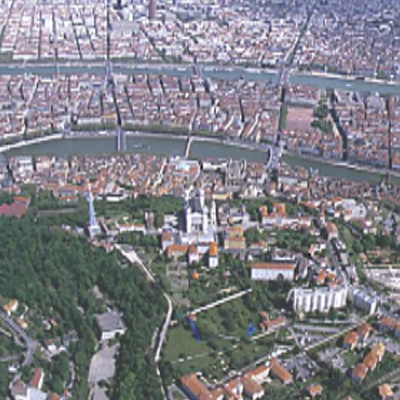
Richard Nordies
keywords:WorkshopRichard Nordies
keywords:Workshop

Manoel Rodrigues Alves
keywords:Workshop
Manoel Rodrigues Alves
keywords:WorkshopManoel Rodrigues Alves
keywords:Workshop
Support:




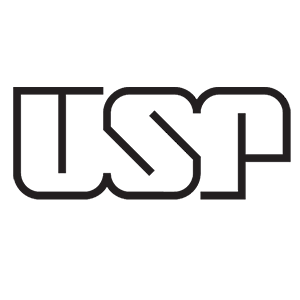


Support:






